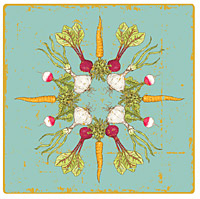sierraclub.org - sierra magazine - january/february 2010 - ponder


Ponder | Your Place in Nature
A Growing Movement
By Melanie L. Griffin
 One foggy Maryland morning last spring, I was among more than 400 people who donned jeans and boots, packed shovels and hoes, and headed to...church. After months of hoarding leaves from suburban yards and gathering manure from local farmers, parishioners at Cedar Ridge Community Church in Spencerville were ready to spend a Sunday transforming hard clay into dark, rich humus.
One foggy Maryland morning last spring, I was among more than 400 people who donned jeans and boots, packed shovels and hoes, and headed to...church. After months of hoarding leaves from suburban yards and gathering manure from local farmers, parishioners at Cedar Ridge Community Church in Spencerville were ready to spend a Sunday transforming hard clay into dark, rich humus.
Creating a farm might seem an unlikely mission for a congregation of urban dwellers and suburbanites. For Cedar Ridge, the idea had grown out of a year of prayerful reflection about how to use our 63 acres in a way that would cherish the earth and its inhabitants. We also hoped that working the soil and giving organic food to our neighbors in need would help us to grow spiritually.
The groundbreaking ceremony started with a parade—led by dozens of children carrying balloons and signs depicting peas, carrots, and potatoes—and soon crews of sweaty teens were digging up rocks while their younger brothers and sisters rescued earthworms from dirt clods. Their parents tackled infrastructure projects. First up: defense.
"How did you learn to build deer fences?" I called up the ladder to the man supervising the fence team. "Never done it before," he said. "I used the Internet." Spirit was more important than experience.
We also used the Web to learn about companion planting, sowing crops that would help each other grow, such as radishes and squash. "I've finished weeding the squash beds!" cried an amateur farmer as she tossed freshly uprooted radish seedlings onto the compost pile.
Later in the season, as the beetles that were to have been repelled by the ill-fated radishes turned squash to mush and bean stalks to wispy brown lace, I recalled advice from author and Arkansas farmer Ragan Sutterfield: "There's nothing more humbling than being a farmer—you know you are not in charge."
As I write, we've survived our first harvest, and the soil is resting. We donated more than a thousand pounds of tomatoes, strawberries, green beans, and squash to local homeless shelters and homes for single mothers. Friendships grew out of leisurely afternoons weeding the carrot patch, and I rejoice still in the words of one young bean harvester: "Mommy, this is way more fun than watching TV." In the years ahead, we hope to create a hands-on curriculum about sustainability and the benefits of local food production, as well as to offer a retreat from city life.
We are, I've discovered, part of a growing movement of faith communities engaging in gardening and "creation care." Churches are finding that farming brings together diverse people, occupies troubled teens, and teaches children about God's abundance. Drab churchyards nationwide have been brightened by colorful pumpkins and sunflowers, the smell of musty hymnals supplanted by the warm scent of vine-ripened tomatoes.
As one who sees the divine most strikingly in the natural world, I am puzzled that so many who share my faith have been persuaded that environmental activism is antihuman or anti-God. I'm encouraged that churches, synagogues, and mosques are embracing stewardship of the planet.
Sore muscles, blistered hands, and manure-laden boots have brought my congregation together. I am hopeful that the church-farm movement will continue to grow, transforming hardened hearts.
Melanie L. Griffin worked for 27 years in the Sierra Club's National Campaign Office. Her writing has appeared in Wild Earth Journal, Grist, and The World and I.
Illustration by iStockphoto/quisp65